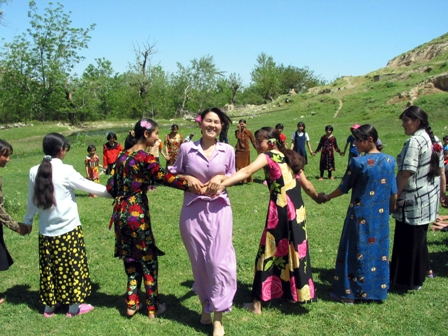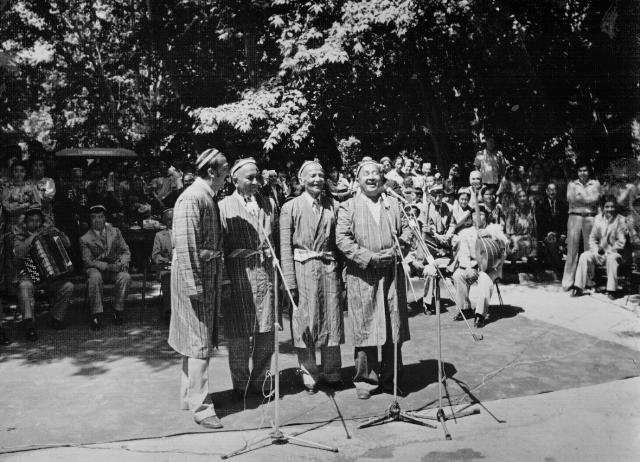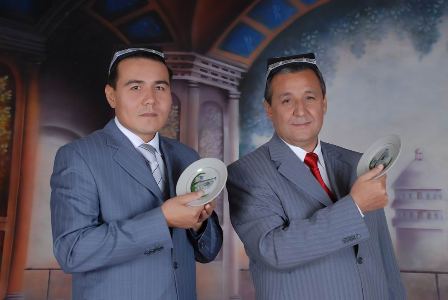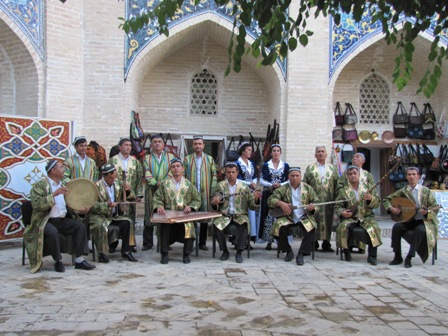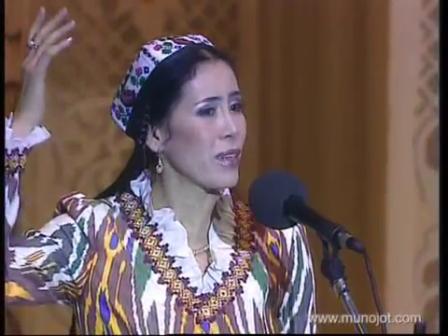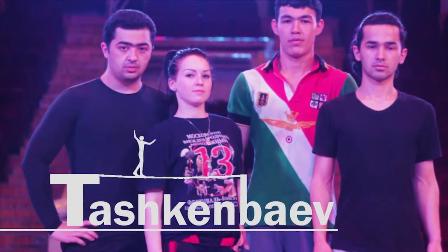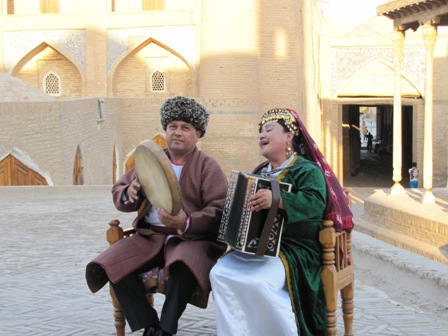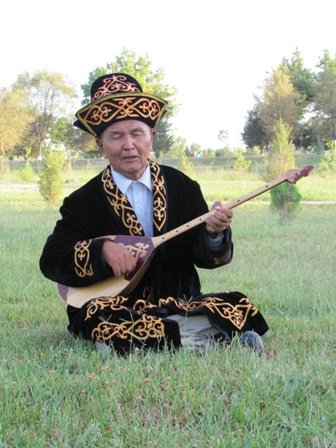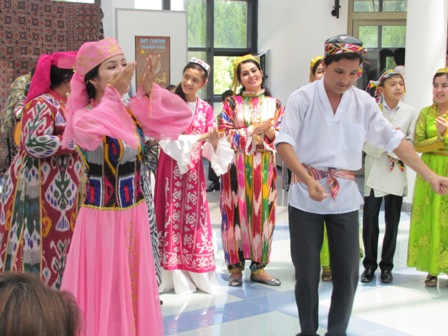Cultural Space of Boysun
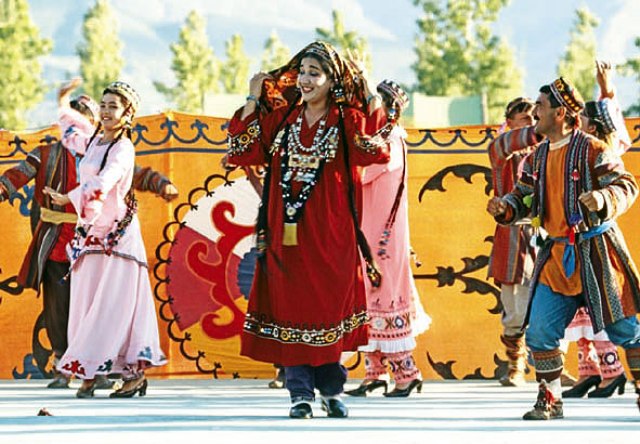
Cultural space of Boysun was recognized by UNESCO as the "Masterpiece of Oral and Intangible Cultural Heritage of Humanity" among the first 19 nominations (i.e. objects of cultural heritage of world community) in 2001. Consequently, in 2008, it was included in the Representative List of the Intangible Cultural Heritage of the Humanity of UNESCO. These events, in turn, gave an incentive for in-depth study, documentation and preservation of folk culture of Boysun and its artistic traditions.
The cultural space of Boysun is a result of human's creative spirit, which has evolved and transformed over history. Its traditional art and folklore, while developing for centuries on the basis of indigenous traditions, witnessed various impacts, which were results of peculiar way of historical development.
Boysun, as a unique object of historical and cultural heritage of Uzbekistan, already by the middle of the ХХ century stood out as the distinct territory with key archaeological sites and monuments. The most unique of them are: the site of Neanderthal man in the cave of "Teshik-Tash" near Machay village; "Kushan Border Wall" and "Iron Gates" gorge near Derbent; Greco-Macedonian fortress of "Kurganzol"; Kushan fortress of "Poyonkurgan"; about two hundred rock paintings of "magical hunt" for bulls in the mountains of Kugitanga in Zarautsai; the tracks of dinosaurs which lived some 65 million years ago near the village of Gumtalak and Kurgoncha; an ancient construction of an "Earth Bridge" in the village of Pulhokim; a miracle of mountain engineering - a step-road over the "Shoti" precipice, which is more than 200 years old, and which is located not far from the village of Dekhibolo (Diybolo); stunningly beautiful gorge of "Surkhi" with its "Sulton" spring in the village of Kurgoncha; Omonkhona, with its unique and curative spring, which cures many diseases and the tomb of Holy Khoja Sultan Vali, etc. Such a diversity and richness of synthetic culture of Boysun, as testified by the aforementioned archaeological sites and monuments, is closely connected to its strategic location at the crossroads of trade routes of the Great Silk Road.
Tangible and intangible culture of Boysun is represented by various elements of art and culture, which are typical for the people of Central Asia, Afghanistan, Iran, and to some extent, of India. As such, in traditional culture of the region it is possible to observe existence of settled and nomadic folklore-, ritual-, and crafts-related traditions of Turkic and Eastern Iranian peoples, which represent a combination of Islamic views and ancient superstitious beliefs. Moreover, suitable geographic location of the region allowed preserving many traditions associated with folk culture (i.e. a traditional way of life, original traditions in folk creativity). And these manifest themselves in folk music and oral poetic creativity; in originality of epics, folk crafts and national dresses; in sustainable existence of the most ancient rituals; in folk games. In addition, manifestation of these traditions is a result of peculiar economic and cultural environment under which many ethnic groups (such as Turks, Khongirads, Katagans, Chagatais, Karluqs, Durmens, Kharduri, Tajiks, Uzbeks, Barlases, and others) have been living.
Notably, there are many legends and fairy-tales, which explain the origins of the names of villages in Boysun. Also, traditions and rituals were preserved there, which are associated with family festivities, (such as "Nikoh toy" or "Oghil toy" ("wedding ceremony")) with their diverse spectacular performances, folk games, competitions and dances (like kopkara, kurash, shavloq, piyoda, uloq, kavzo). Besides the aforementioned, there are rituals of rainmaking ("Sust khotin" or "Suzil khotin") or medical treatment ("Jakhr"), which testify to pre-Islamic origins of these practices.
Artistic and folk crafts occupy an important place in the traditional culture of Boysun. The most widespread ones are embroidery (the items made range from skullcaps to large-sized suzani), carpet-making (the items include ghajari, takir, oqenli, terma, kokhma, julkhirs, etc.), felt-making, weaving (with such traditional fabrics as alacha and janda), wood carving, making of musical instruments (such as dombra, dutar, chang-qobuz, nay (made of clay, wood, reed or bones)), pottery, tanning, etc.
Music of Boysun is represented by two large groups of applied (lullaby songs, ritual- and labor-related songs and melodies) and non-applied genres (lyrical and daily life songs and melodies; terma, qoshiq, lapar and ashula), which represent the heritage of Uzbeks and Tajiks. These include lullaby songs ("Alla"), calendar-related ritual songs ("Muborakbod", "Yil boshi", "Sumalak", "Boychechak", "Sust khotin", "Ramazon"),wedding-related ritual songs ("Yor-yor", "Kelin salom", "Mochai", "Arus baron"), funeral-commemoration-related songs ("Yighi", "Guyanda", "Sadr"), cult- and ritual-related songs ("Jakhr"), labor-related songs ("Mayda", "Oblo Baraka", "Shokhmoylar", "Qosh khaydash", "Khush-khush", "Turam", "Urmak", "Yorghuchoq").
Folk and epic legends (i.e. dostons), which are performed by applying recitative-guttural manner of singing under accompaniment of dombra, are represented by Sherobod-Boysun performance school. The most famous bearer of traditions of this particular school was Sherna bakhhshi. At present, his apprentices, Shoberdi Boltaev (Munchoq village) and Abdunazar Pyonov (Khonkom village), are people's bakhshi of Uzbekistan (they stage their performances in many foreign countries). The bearers of folk epic traditions of Boysun are subdivided into bakhshi-shoirs (narrators of dostons) and bakhshi-termachi (performers of terma (songs)).
The majority of music pieces of Boysun, which have been preserved to these days, are connected with folk rituals with their diverse customs, ceremonies and traditions. These include calendar-related ones (rainmaking - "Sust khotin"; windmaking - "Mirkhaydar"; snowmaking - "Qor keldi"), family- and daily life-related ones ("Beshik toy", "Sunnat toy", "Oghil toy", "Muchal toy", "Nikoh toy", "Sadr", etc.), cult- and ritual-related ones (medical treatment - "Jakhr" or "Kuch", "Alas", "Mushkulkushod") as well as those, associated with traditional folk celebrations (arrival of spring – "Navruz", harvesting – "Mekhrgan", sowing – "Darvishona", etc). Notably, these were not only preserved to these days but also observable in spiritual life of the population.
In general, the bearers of traditions of folklore art of Boysun are the peoples living there, i.e. folk performers, "Boysun" folklore ensemble, "Quralay" children's folklore ensemble, etc. At the same time, the bearers of traditions of artistic and folk crafts are master-craftsmen.
Goal-oriented scientific expeditions (2002-2005) were carried out to study Boysun phenomenon with support of UNESCO and Japanese Fund in Trust. In these expeditions emphasis was made on studying historic and ethnographic features of the region, its original traditions, folk crafts, oral folk creativity, musical culture, folk games and epics. Based on the materials gathered during the expeditions the following were published: two monographs dedicated to Boysun, i.e. Atlas of Artistic Crafts and Traditional Music Culture (2006), in English and Russian languages; a collection entitled "History and Traditional Culture of Boysun" (2005); collections of materials of scientific conferences; an album of the first festival of "Boysun bahori". In addition audio disks under the title of "Traditional Music of Boysun" were produced, and video film and multimedia entitled "Boysun" were created. In this respect, one of the most significant measures was organization of "Boysun bahori" open folklore festival and within its framework – organization of international scientific conferences (2002-2006). Also, with support provided by UNESCO a Center for Folk Art, museum of "Applied Arts of Boysun" and workshops of folk craftsmen were constructed and began to function. In addition, a school on weaving and carpet-making, which is based on "ustoz-shogird" ("master-apprentice") methodology, was created. Notably, within the framework of the festival fairs of folk crafts were organized, shows of traditional and modern fashion were demonstrated, folklore performances of Academic National Theatre and Surkhandarya Regional Theatre were staged. Besides that a workshop of master-ceramist, Izzatulla Eshonqulov, was reconstructed with the aim of reviving traditions associated with Boysun ceramic.
The materials, gathered during these expeditions, were also used in creation of the national inventory of "Cultural Space of Boysun". This inventory provides descriptions for more than 20 elements of intangible cultural heritage of the region.
Construction of the railroad, connecting Kumkurgan, Boysun and Guzar, ensured inflow of foreign tourists to this unique historical and ethnocultural region.





